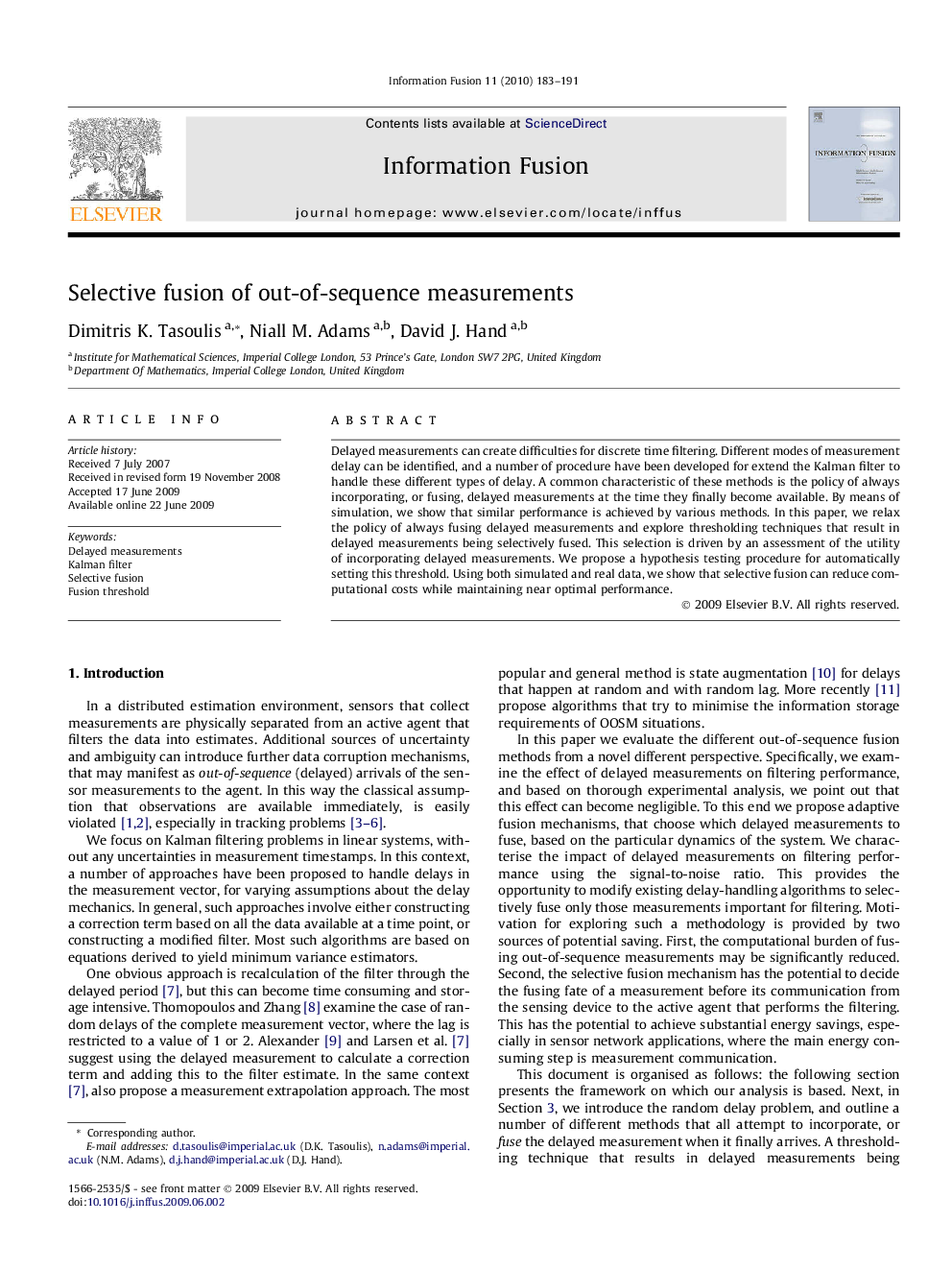| Article ID | Journal | Published Year | Pages | File Type |
|---|---|---|---|---|
| 528344 | Information Fusion | 2010 | 9 Pages |
Delayed measurements can create difficulties for discrete time filtering. Different modes of measurement delay can be identified, and a number of procedure have been developed for extend the Kalman filter to handle these different types of delay. A common characteristic of these methods is the policy of always incorporating, or fusing, delayed measurements at the time they finally become available. By means of simulation, we show that similar performance is achieved by various methods. In this paper, we relax the policy of always fusing delayed measurements and explore thresholding techniques that result in delayed measurements being selectively fused. This selection is driven by an assessment of the utility of incorporating delayed measurements. We propose a hypothesis testing procedure for automatically setting this threshold. Using both simulated and real data, we show that selective fusion can reduce computational costs while maintaining near optimal performance.
